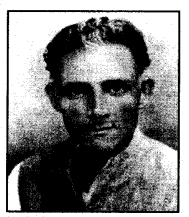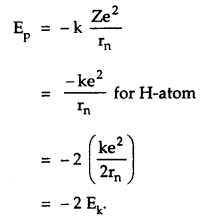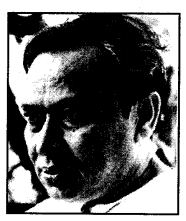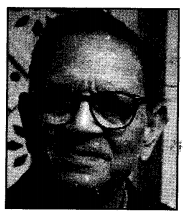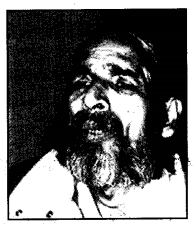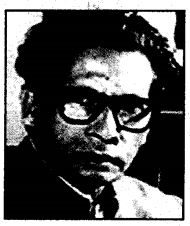By going through these CBSE Class 12 Hindi Notes Chapter 6 उषा Summary, Notes, students can recall all the concepts quickly.
उषा Summary Notes Class 12 Hindi Aroh Chapter 6
उषा कविता का सारांश
कवि ने ‘उषा’ कविता में सुबह-सवेरे सूर्य के निकलने से पहले को प्राकृतिक शोभा का सुंदर चित्रण किया है। आकाश का गहरा नीलापन सफ़ेद शंख के समान दिखाई देने लगता है। आकाश का रंग ऐसा लगता है जैसे किसी गृहिणी ने राख से चौका लीप-पोत दिया हो जो अभी गीला है। उसका रंग गहरा है। जैसे ही सूर्य कुछ ऊँचा उठता है और उसकी लाली फैलती है तो ऐसे प्रतीत होने लगता है जैसे केसर से युक्त काली सिल को किसी ने धो दिया है या उसपर लाल खड़िया चाक मल दी हो। नीले आकाश में सूर्य ऐसे शोभा देने लगता है जैसे कोई सुंदरी नीले जल से बाहर आती हुई रह-रहकर अपने गोरेपन की आभा बिखेर रही हो। जब सूर्य पूर्व दिशा में दिखाई देने लगता है तो उसका जादुई प्रभाव समाप्त हो जाता है।
उषा कवि परिचय
जीवन-परिचय-शमशेर बहादुर सिंह हिंदी-साहित्य की नई कविता के प्रमुख कवि माने जाते हैं। इनका ० अज्ञेय के तार सप्तक में महत्वपूर्ण स्थान है। इनका जन्म13 जनवरी, सन 1911 ई० को उत्तराखंड 0 के देहरादून जिले के एक साधारण मध्यमवर्गीय परिवार में हुआ था। इनकी प्रारंभिक शिक्षा देहरादून के एक स्कूल में हुई। हाई स्कूल और इंटरमीडिएट की परीक्षा गोंडा से प्राप्त की। इन्होंने बी० ए० तथा एम० ए० पूर्वाद्ध की उच्च शिक्षा इलाहाबाद विश्वविद्यालय से ग्रहण की। इनकी प्रारंभ से ही चित्रकला में अधिक रुचि थी जिसका प्रयोग इन्होंने अपनी रचनाओं में किया है। इन्होंने दो वर्ष तक सुमित्रानंदन पंत के ‘रूपाभ पत्र’ में कार्य किया।

इसके बाद ये ‘कहानी’ और ‘नया साहित्य’ आदि पत्र-पत्रिकाओं के संपादक मंडल में रहे। ये दिल्ली विश्वविद्यालय के उर्दू विभाग में कोश से संबंधित कार्य भी करते रहे। तत्पश्चात विक्रम विश्वविद्यालय उज्जैन में ‘प्रेमचंद सृजन’ पीठ के अध्यक्ष पद पर कार्यरत रहे। सन 1977 ई० में ‘चुका भी हूँ नहीं मैं’ काव्य-संग्रह पर इन्हें ‘साहित्य अकादमी’ पुरस्कार से अलंकृत किया गया। इन्हें साहित्य की उत्कृष्टता के लिए ‘कबीर सम्मान’ सहित अनेक पुरस्कारों से सम्मानित भी किया गया।
अंततः सन 1993 ई० में दिल्ली में ये अपना महान साहित्य-हिंदी जगत को सौंपकर चिरनिद्रा में लीन हो गए। प्रमुख रचनाएँ-शमशेर बहादुर सिंह हिंदी साहित्य के एक श्रेष्ठ प्रगतिशील कवि माने जाते हैं। इन्होंने अनेक विधाओं पर सफल लेखनीचलाई है। इनकी प्रमुख रचनाएँ निम्नलिखित हैं
(i) काव्य-संग्रह-चुका भी हूँ नहीं मैं, कुछ कविताएँ, कुछ और कविताएँ इतने पास अपने, बात बोलेगी, काल तुमसे होड़ है मेरी।
(ii) संपादन-उर्दू-हिंदी कोश।।
(iii) निबंध-संग्रह-दोआब।
(iv) कहानी-संग्रह-प्लाट का मोर्चा।
साहित्यिक विशेषताएँ-शमशेर जी हिंदी के सर्वाधिक प्रसिद्ध प्रगतिशील कवि हैं। बौद्धिक स्तर पर इन पर मार्क्सवादी विचारों का गहन । प्रभाव है। ये विचारों के स्तर पर प्रगतिशील तथा शिल्प के स्तर पर प्रयोगधर्मी कवि हैं। इनके साहित्य की प्रमुख विशेषताएँ निम्नलिखित
(i) गरीबी का सजीव चित्रण-शमशेर जी ने अपने काव्य में समाज में फैली गरीबी का सजीव चित्रण किया है। गरीबी के कारण समाज की दयनीय दशा के प्रति इन्होंने गहन चिंता व्यक्त की है। गरीबी रूपी दानव ने संपूर्ण समाज को घेर लिया है जिसके कारण जनता बुद्धिहीन हो गई। इन्होंने अपनी कविताओं के माध्यम से बताया है कि समाज में घर-घर मजदूरी करनेवाले मजदूरों की दुर्दशा त्रासदपूर्ण है। घर-घर मजदूरी करनेवाले मजदूर का पूरा परिवार घर-घर मजदूरी करने पर मजबूर है। कवि ने समाज में बढ़ रही इस त्रासदी पर गहन चिंता व्यक्त की है।
दैन्य दानव; काल
भीषण; कर स्थिति; कंगाल
बुद्धि घर मजूर।
दैन्य दानव, कृर स्थिति।
कंगाल बुद्धि; मजूर घर भर।
(ii) देशभक्ति की भावना-शमशेर हिंदी साहित्य के एक सजग साहित्यकार थे। इनके हृदय में अपने देश के प्रति गहन प्रेम था। इन्होंने अपने काव्य में अपने देश तथा संस्कृति का अनूठा चित्रण किया है। इनकी अनेक कविताएँ भारतीय जनता को स्वतंत्रता के प्रति जागृत करने का आह्वान करती हैं। कवि ने भारतीय जनता को अपनी स्वतंत्रता को बचाने के लिए एकजुट रहने का संदेश दिया है। वे कहते हैं, हमें अपनी स्वतंत्रता को बचाने के लिए एकता की भावना को बनाए रखना चाहिए। इनकी अनेक कविताएँ ऐसे ही भारतीय जनता का आहवान करती प्रतीत होती हैं
एक जनता का-अमर वर
एकता का स्वर।
अन्यथा स्वातंत्र्य इति।
(iii) सामाजिक जीवन का यथार्थ चित्रण-शमशेर जी यथार्थवादी भावना से ओत-प्रोत कवि माने जाते हैं। इन्होंने अपने काव्य में |
यथार्थ की भावभूमि का सहारा लेकर वर्णन किया है। यही कारण है कि इनकी कविताओं में समकालीन समाज के जन-जीवन का यथार्थ चित्रण मिलता है। इन्होंने समाज की उठा-पटक, ईष्या-द्वेष, ग़रीबी, लाचारी, शोषण आदि की यथार्थ अभिव्यंजना की है। इनका एक यथार्थवादी चित्र द्रष्टव्य है
सींग और नाखून
लोहे के बख्तर कंधों पर।
सीने में सुराख हड्डी का।
आँखों में घास काई की नमी।
एक मुस्दा हाथ
पाँव पर टिका
उलटी कलम थामे
तीन तसलों में कमर का घाव सड़ चुका है
जड़ों का भी कड़ा जाल
हो चुका पत्थर।
(iv) प्रगतिवादी चेतना-शमशेर जी मार्क्सवादी विचारधारा से प्रेरित कवि हैं। इसलिए इनके साहित्य में प्रगतिवादी चेतना का प्रतिपादन भी हुआ है। इनकी अनेक कविताओं पर द्वंद्वात्मक भौतिकवाद का गहन प्रभाव दिखाई देता है। इन्होंने अपने साहित्य में शोषक | वर्ग की खुलकर निंदा की है तथा शोषित समाज के प्रति विशेष सहानुभूति प्रकट की है। इन्होंने शोषण का शिकार झेल रहे। दीन-हीन समाज के प्रति गहरी संवेदना अभिव्यक्त की है।
(v) प्रकृति चित्रण-शमशेर जी का मन प्रकृति-वर्णन में खूब रमा है। इनका जन्म ही प्रकृति के आँचल में हुआ था। अतः प्रकृति से | इनका बचपन से लगाव था। इन्होंने प्रकृति-सौंदर्य को बहुत नजदीक से देखा है इसीलिए इनके काव्य में प्रकृति-सौंदर्य का अनूठा | चित्रण हुआ है। इन्होंने अनेक कविताओं में प्रकृति में अनेक सुंदर और मनोहारी चित्र बिखरे हैं। चित्रकला में विशेष रुचि होने | के कारण इनके प्राकृतिक चित्र अत्यंत सजीव बन पड़े हैं। इन्होंने अनेक कविताओं में बाग-बगीचों, पहाड़ों, झरनों और नदियों के सुंदर-सुंदर बिंब प्रस्तुत किए हैं’उषा’ कविता में कवि ने प्रात:कालीन वातावरण का सजीव चित्रण किया है
प्रातः नभ था-बहुन नीला, शंख जैसे
भोर का नभ,
राख से लीपा हुआ चौका
(अभी गीला पड़ा है।)
बहुत काली सिल
जग से लाल केसर मे
कि जैसे धुल गई हो।
स्लेट पर या लाल खड़िया चाक
मल दी हो किसी ने।
(vi) रहस्यवादी भावना-शमशेर जी एक प्रयोगधर्मी कवि हैं, अतः इन्होंने अपने साहित्य में अनेक नए-नए प्रयोग किए हैं। कहीं-कहीं। इनके ऊपर छायावाद का प्रभाव दिखाई देता है। इनके ‘राग’ नामक संग्रह में इनकी रहस्यवादी भावना का चित्रांकन हुआ है। ‘बात बोलेगी’ कविता के माध्यम से इन्होंने वस्तुनिष्ठ सत्य की वकालत की है तथा सत्य क्या है; दुःख क्या है; विडंबना क्या है आदि अनेक रहस्यों का उद्घाटन भी किया है। जैसे
बात बोलेगी;
हम नहीं।
भेद खोलेगी
बात ही।
सत्य का मुख
झूठ की आँखें
क्या-देखें
सत्य का रुख;
समय का रुख है:
अभय जनता को
सत्य ही सुख है,
सत्य ही सुख।
(vii) भाषा-शैली-शमशेर जी कविताएँ जहाँ एक ओर अत्यंत बोधगम्य तथा सरल हैं तो दूसरी ओर नितांत जटिल भी हैं। कवि पर। उर्दू शायरी का भी प्रभाव देखा जा सकता है जिसके कारण उन्होंने संज्ञा और विशेषण से अधिक सर्वनामों, क्रियाओं, अव्ययों और मुहावरों पर बल दिया है। शमशेर जी की प्रवृत्ति सदा ही वस्तुपरकता को उसके मार्मिक रूप में ग्रहण करने की रही है, इसीलिए उनकी काव्य-अनुभूति बिंब ही नहीं बल्कि बिंबलोक की है।
इनके काव्य में प्रगतिवाद, प्रयोगवाद तथा नई कविता के तत्व घुल-मिलकर इनके भाव और भाषा को उजला रूप प्रदान करते हैं। चित्रकला, संगीत और कविता इनकी सर्जनात्मकता को नया रंग देते हैं। इनकी भाषा सरल, सुबोध, साहित्यिक खड़ी बोली है जिसमें तत्सम, तद्भव, अंग्रेजी, उर्दू, फ़ारसी आदि भाषाओं की। शब्दावली का प्रयोग हुआ है। इनकी शैली भावपूर्ण है। इसके साथ-साथ चित्रात्मक, वर्णनात्मक शैलियों का प्रयोग भी किया है। मुहावरों के प्रयोग से इनकी भाषा में रोचकता उत्पन्न हो गई है।
(viii) अलंकार, छंद और बिंब-शमशेर जी के काव्य में शब्द और अर्थ दोनों प्रकार के अलंकारों का प्रयोग किया गया है। इन्होंने अपनी कविताओं में अनुप्रास, यमक, श्लेष, पदमैत्री, मानवीकरण, रूपक, उत्प्रेक्षा आदि अलंकारों का सुंदर प्रयोग किया है। उत्प्रेक्षा अलंकार का उदाहरण द्रष्टव्य है
नील जल में या
किसी की गौर, सिलमिल देह जैसे
हिल रही हो।
और —
जादू टूटता है उस उषा का अब
सूर्योदय हो रहा है।
इन्होंने अपने काव्य के लिए मुक्तक छंद का प्रयोग किया है। इनकी बिंब-योजना अत्यंत सार्थक एवं सटीक है। इनके शब्द-चित्र अत्यंत सजीव हैं।
